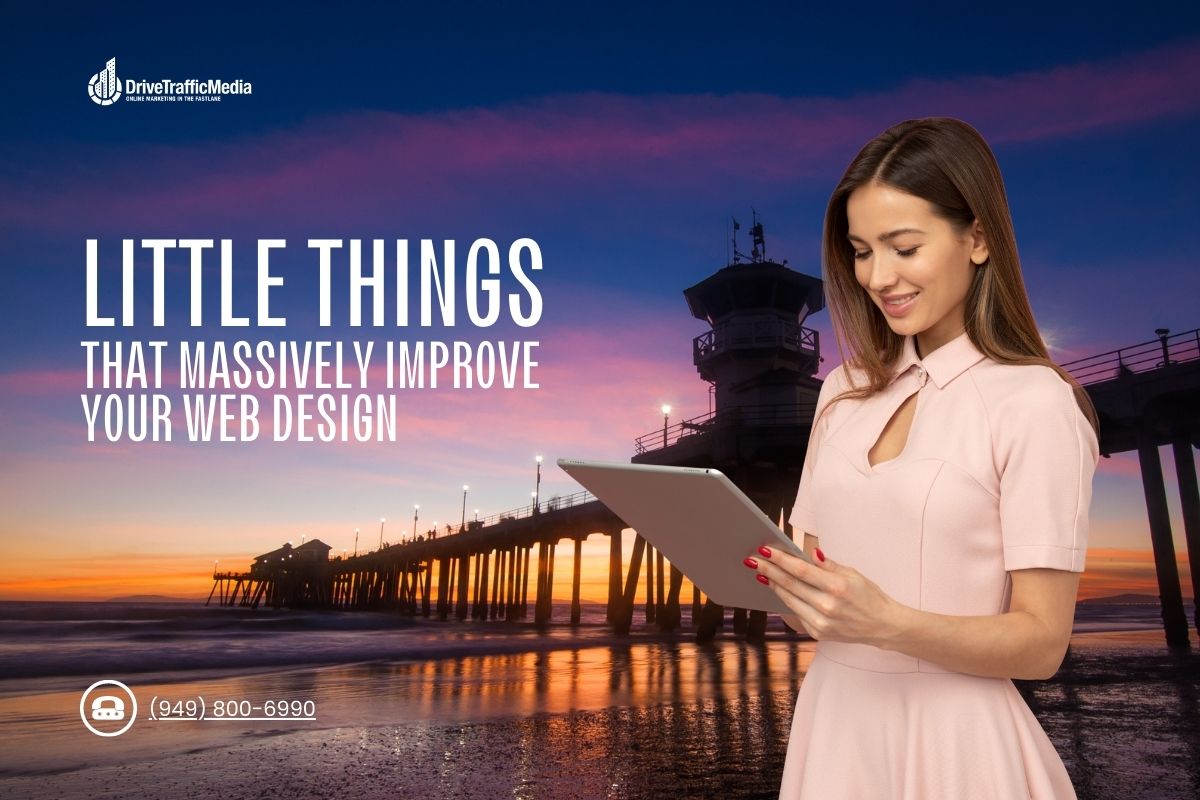Website design in Orange County is one of the critical components of a website that determines its success. It’s not just about making it visually appealing but also user-friendly and easy to navigate for your beloved customers. And while website design is an art form, not every change you make on your website should be grand and in-your-face. Sometimes, the best improvements can be minor things!

Here are some small things that can improve website design:
1. White Space
One of the most effective ways to improve website design is to use white space effectively. White space, also known as negative space, is the area between elements on a website, and it helps to give the website a clean, uncluttered look and makes it easier to read. It also spaces out content, so every idea is in its own section.
2. Typography
Choosing the right font and size is essential to make the website easy to read. The typography should be consistent throughout the website, and the font size should be large enough to be easily readable, even on mobile devices. The typography should also match your brand–use serif fonts to look more professional and calligraphy fonts if you want to look feminine or artsy.
3. Color Scheme
The color scheme of a website is critical in creating an appealing design. The colors used should complement each other and be consistent throughout the website. The color scheme should also reflect the brand or theme of the website, and it should not be so grating on the eyes so they can still be easily read.
4. Navigation
Navigation is one of the most important aspects of a website, and it should be displayed at the top of the page, with clear labels and easy-to-use categories and subcategories. It should be consistent around the website and guide your readers on where to go.
5. Images
Using high-quality images can improve the visual appeal of a website. The images should be relevant to the content, and the file size should be optimized to reduce page load times.
6. Responsive Design
With more and more people accessing websites on mobile devices, it’s crucial to have a website optimized for different screen sizes. Responsive design ensures the website looks good and functions well on all devices.
7. Call-to-Action
A call-to-action is a button or link encouraging the user to take a specific action, such as signing up for a newsletter or purchasing. The call-to-action should be prominently displayed and visible.
8. Consistency
Consistency is key in website design. The design elements, such as fonts, colors, and layout, should be consistent throughout the website, making it easier for the user to navigate and understand the website.
9. Loading Speed
Slow loading times can negatively impact user experience and search engine rankings. Optimizing the website for fast loading times can improve user experience and reduce bounce rates.
10. Accessibility
Websites should be accessible to everyone, including those with disabilities. This means using appropriate color contrasts, providing alt text for images, and ensuring the website is navigable with a keyboard.
In conclusion, website design is a critical aspect of website development. By focusing on small details such as white space, typography, color scheme, navigation, images, responsive design, call-to-action, consistency, loading speed, and accessibility, you can have a very appealing and functional website for your customers.
If you need more help designing a website perfect for your business and target audience, don’t hesitate to contact Drive Traffic Media at (949) 800-6990 or (310) 341-3939.
Check the related article here: https://www.drivetrafficmedia.com/10-elements-you-need-for-your-web-design/
